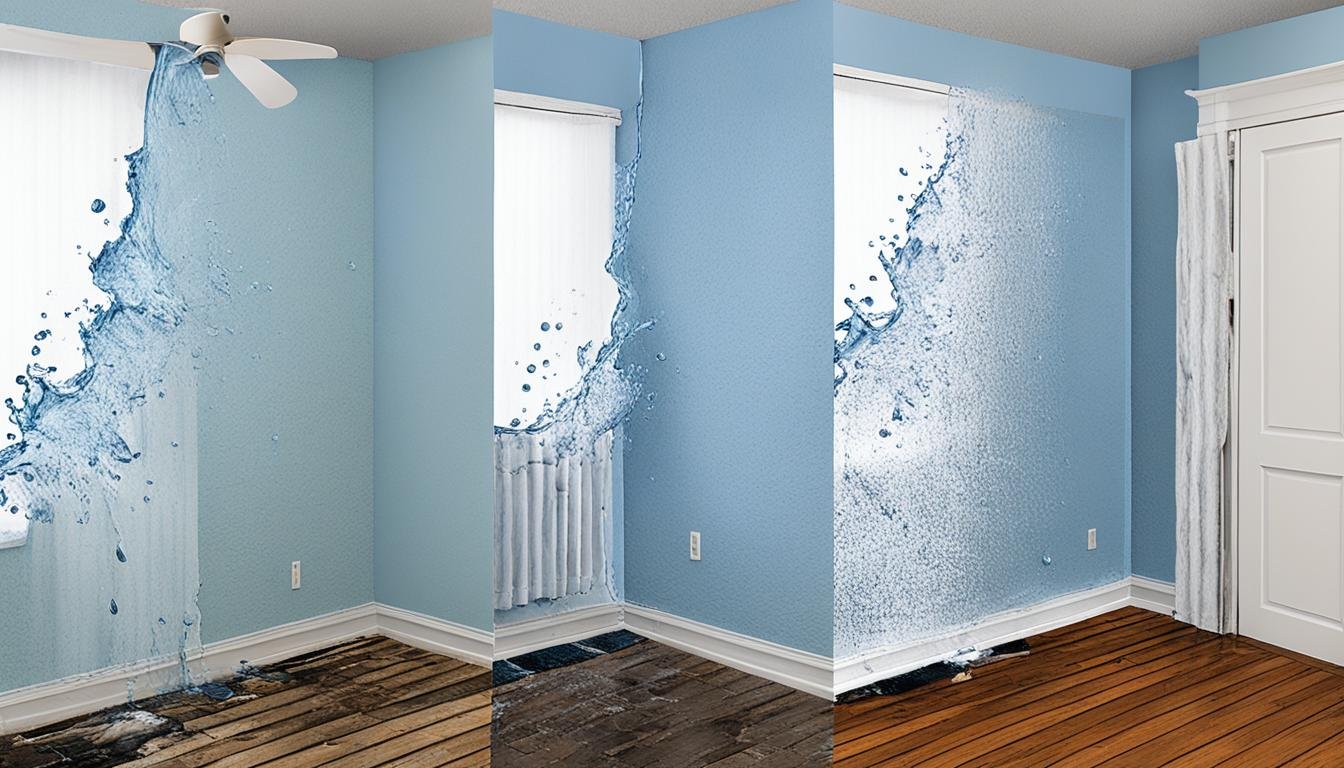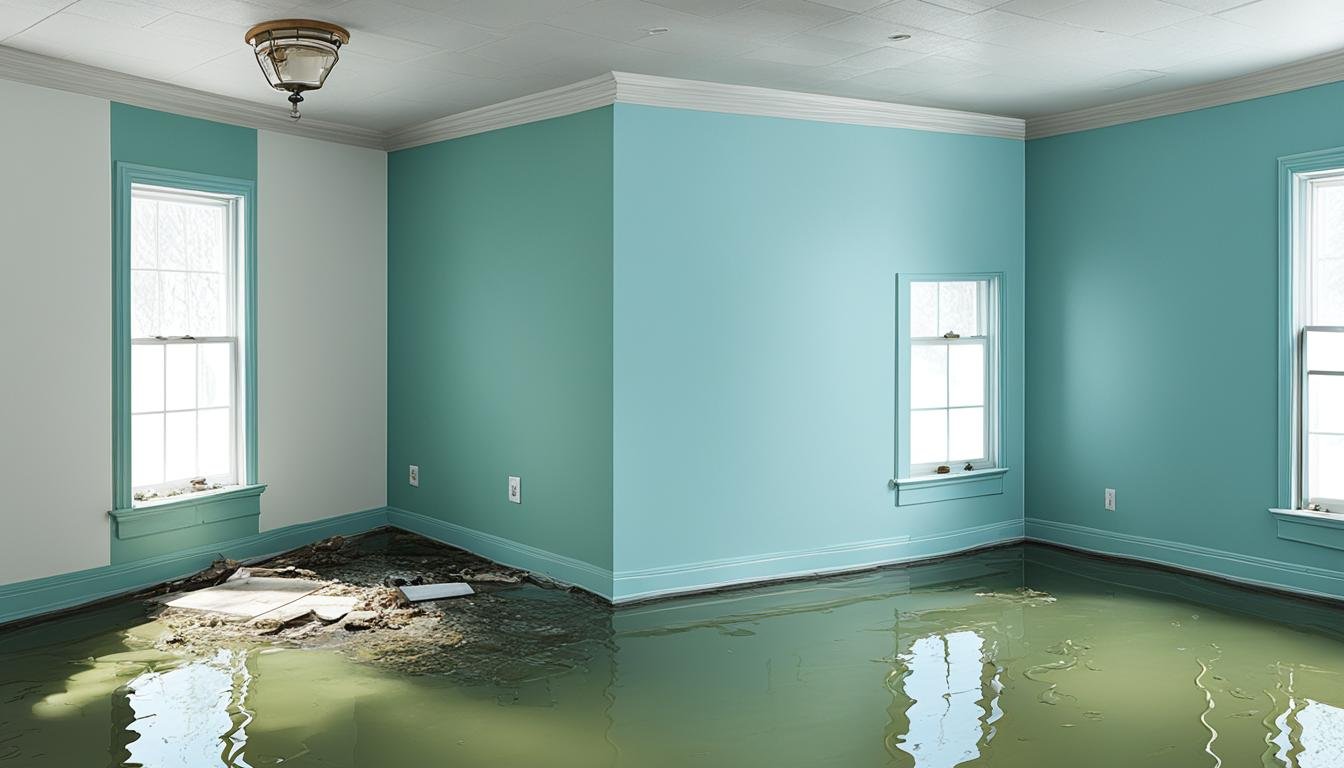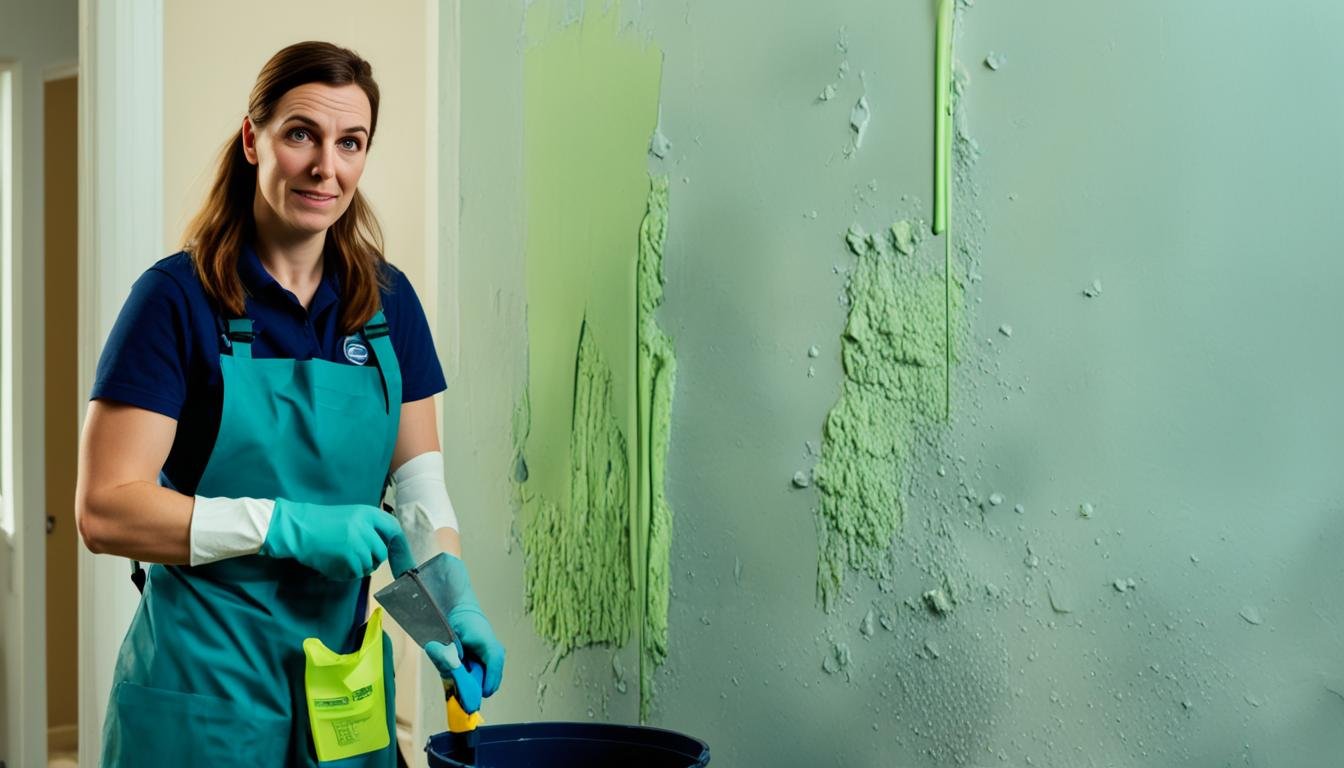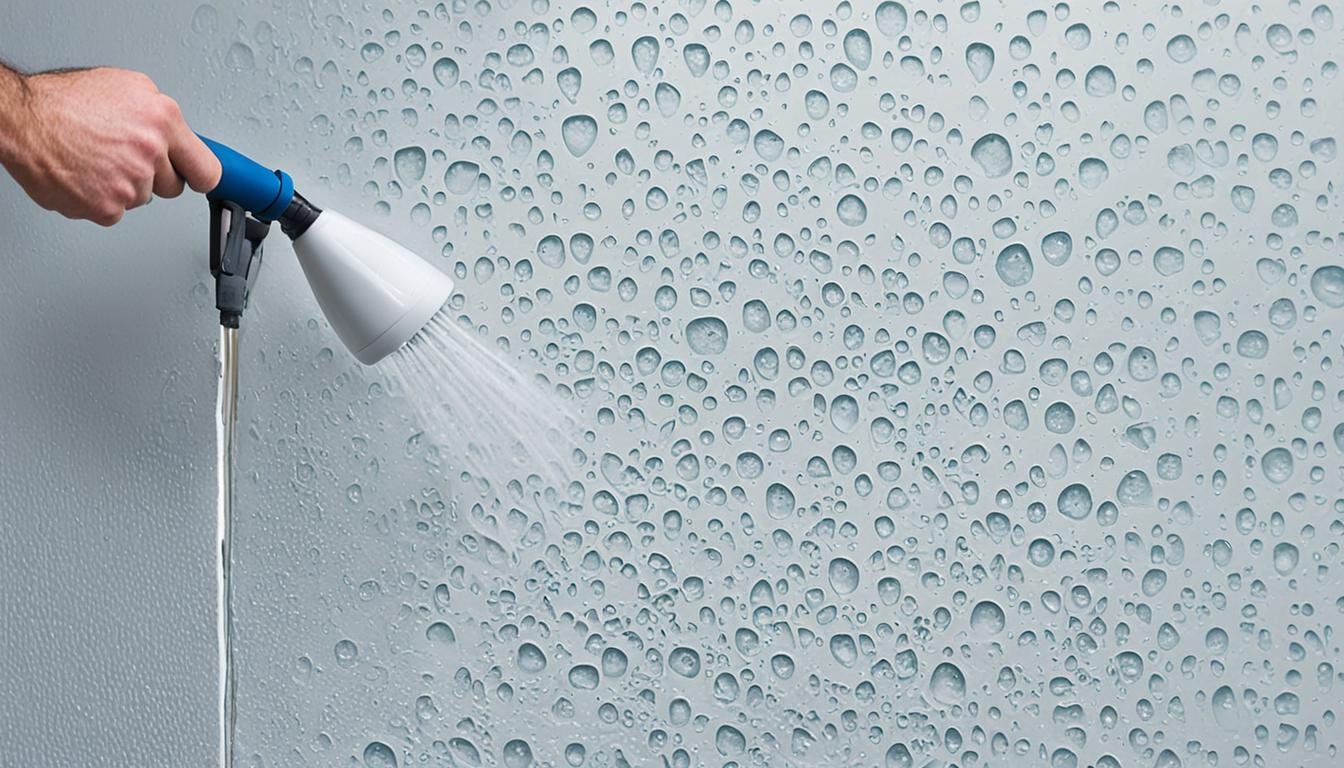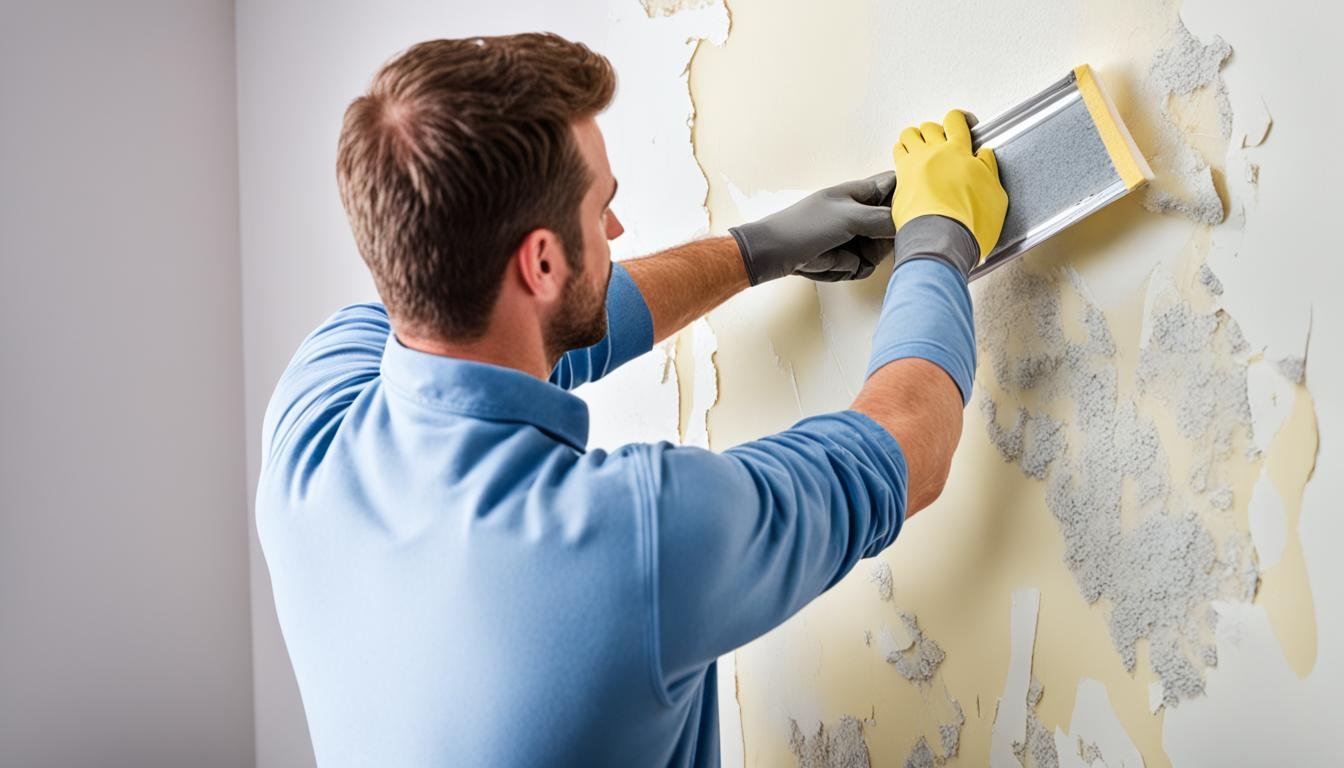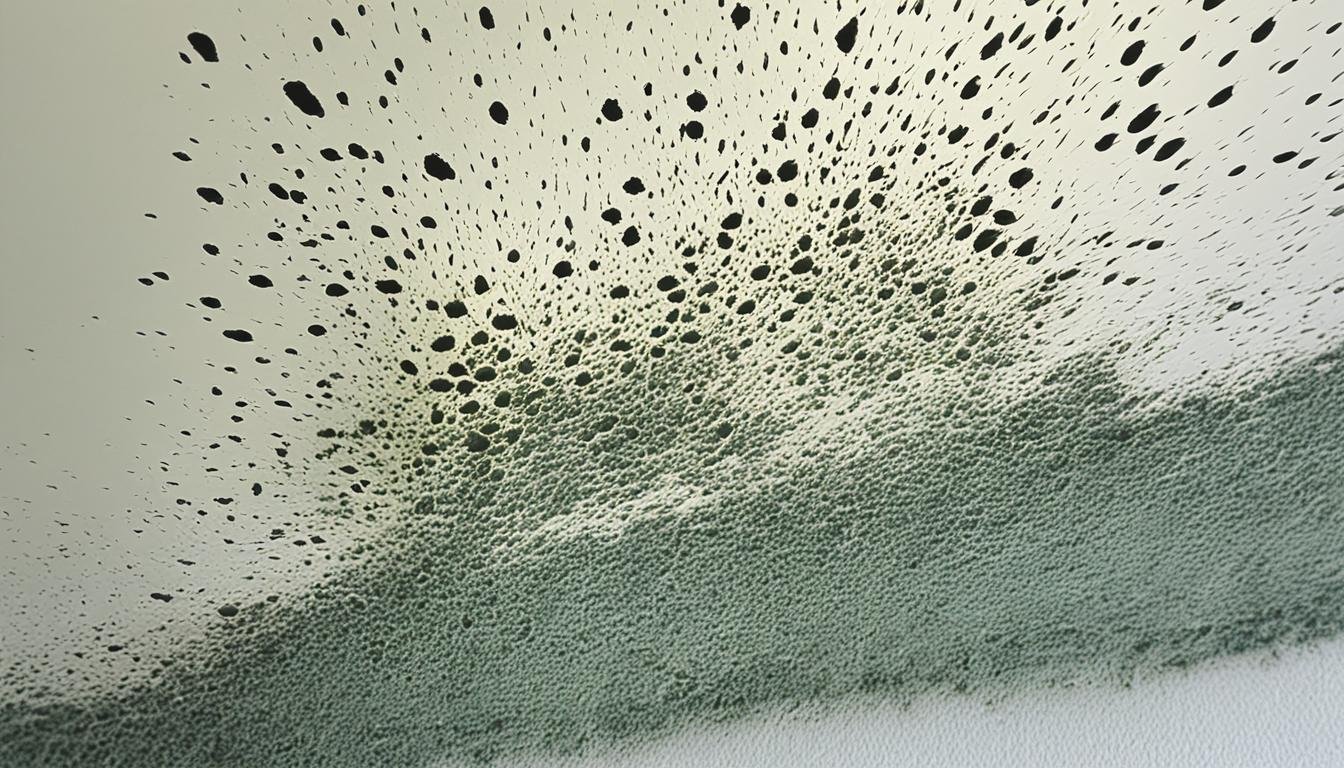Safety of Mold Behind Drywall
Mold is natural but not welcome in homes. It looks bad and can be bad for our health. This is true, especially for kids, the elderly, and those allergic to mold. Homeowners often ignore small water leaks, thinking they’re not a big deal. But, mold grows fast when water is around, usually within 24-48 hours. It’s vital to fix water leaks early. This stops mold from spreading and causing serious damage. Serious damage might mean needing lots of repairs. Water is a big reason for mold in houses. It makes a good place for mold to grow. Black mold is especially bad. It can make you feel sick if you breathe it in without fixing the water damage early. You might notice symptoms like a runny nose or itchy eyes from mold. Quick water damage repair can stop both mold and these health problems. Key Takeaways Mold can start growing within 24-48 hours when water is present Unaddressed water damage can lead to severe structural issues and costly repairs Water is a primary cause of mold growth, creating ideal conditions for it to thrive Some mold types, like black mold, can pose health risks if not properly remediated Mold exposure can trigger allergic reactions with symptoms like respiratory issues Understanding Mold Growth Behind Walls Mold is a frequent issue in homes, loving damp spots like behind walls. Knowing why and how mold grows is key. It helps keep your home healthy and safe. Causes of Mold Growth Mold loves moisture, so it often springs from water problems indoors. Leaks from pipes, roofs, or air ducts, wet clothes, and saturated floors are big culprits. Also, places that flood, high indoor humidity, and poor ventilation play a part. It’s important to keep inside moisture low, under 50%. Using dehumidifiers or air conditioning can help. Good room ventilation helps a lot, too. This is especially true in bathrooms, which are often damp. Signs of Mold Presence When mold is unseen behind walls, look out for water marks, peeling paint, and damp spots. Conduct checks for mold after rains or during humid times. But be careful not to disturb the area. Moving mold around sends its spores into the air. Finding mold calls for quick action. It can harm your home’s structure and your health. Respiratory problems and allergies are common symptoms. For safe removal, hire a pro like Water Damage Pros. They have the tools and know-how to get rid of mold without trouble. “Mold spores are incredibly lightweight and can be carried through the air by air ducts, fans, and human or pet movement.” Safety of Mold Behind Drywall Many people believe mold behind drywall is mainly dangerous due to its spores. But, this is only part of the story. Mold can also create toxic gases and mycotoxins that are harmful to your health. Mold spores usually stay within walls. Yet, the gases and mycotoxins they make can sneak out. They seep through wall cracks and affect the air you breathe. This can make people sick. New technology lets us find dangerous mycotoxins in household dust. Mycotoxins can now make you sick if you touch or breathe them, not just by eating food contaminated with mold. Besides mycotoxins, mold behind walls can have harmful bacteria. These bacteria create dangerous endotoxins. Some think endotoxins are worse than mycotoxins. Doctors now check homes for both toxins. Key Mold-Related Concerns Health Risks Microbial Volatile Organic Compounds (MVOCs) Circulatory and respiratory problems, headaches, nausea, and fatigue Mycotoxins Poisoning, immune system suppression, and neurological issues Endotoxins Chronic airway disease and respiratory distress The threat from mold behind drywall is bigger than just the visible mold. It’s about the unseen toxic gases and chemicals. If you think there’s mold in your house, act fast. Talk to experts like those at San Bernardino Water Damage Restoration. They can make sure your home is safe. Conclusion Finding mold behind your walls is a serious matter. If there’s a lot, you need a professional to handle it. A mold remediation contractor will take steps to keep the mold spores from spreading. They cover the area with plastic and create a vacuum effect. After removing the mold, they clean and dry the area. If you think there’s mold in your walls, call Water Damage Pros in San Bernardino at 951-903-5429. They will thoroughly check your house and offer water damage restoration. Their certified team knows how to fix the problem. Quick action is key to protecting your family and your home. The pros can help keep your home safe and mold-free. Learn more about mold and its effects at the US EPA Mold Page. With expert help, your home can be safe again. Call the Water Damage Pros at sanbernardinowaterdamagerestoration.com or phone 951-903-5429 for a mold inspection and mold remediation services today. FAQ What are the health risks of mold behind drywall? Mold can make toxic gases and poisons. These can spread through cracks and outlets, affecting your health. It’s often found with bacteria, which makes toxic byproducts, leading to airway diseases. How can I identify signs of mold behind my walls? Keep an eye out for signs like water stains, peeling wallpaper, or damp areas. If you find your wall soft or crumbling, it could be rot from mold. What are the common causes of mold growth behind drywall? Mold loves dampness. Leaks in pipes, roofs, or bad ventilation can lead to mold. Water near sinks or appliances is also a common trigger. How should I address mold behind drywall? Calling a professional is the best move for mold behind the walls. They use special tools to keep mold spores from spreading. After removing the mold, they’ll disinfect and dry the area to stop it from coming back. When should I contact a professional for mold remediation? If you think there’s mold, don’t wait. Call a professional at Water Damage Pros – San Bernardino at 951-903-5429 for a check-up. Mold is serious and shouldn’t be neglected. Source Links https://totalcarerestoration.com/tell-mold-behind-walls/ https://airinspector.com/mold-inside-wall-cavities-cant-harm-me-or-can-it/ …


